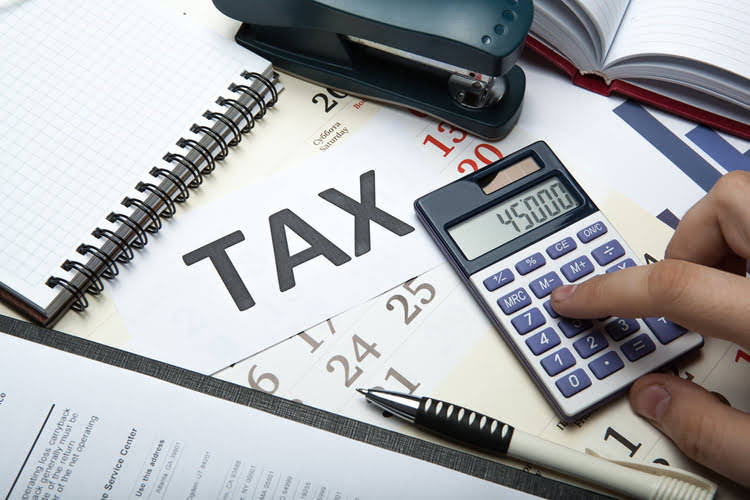
This option can work well and has the advantage of keeping these expenses out of the main section of Profit & Loss if you are only calculating and adjusting COGS once a quarter or once a year. Navigating the financial ebbs and flows of seasonal production is a unique challenge for vineyards and wineries. The cyclical nature of grape cultivation and wine production means that cash inflows and outflows are not evenly distributed throughout the year. This irregularity necessitates a strategic approach to cash flow management to ensure that operations remain smooth and uninterrupted. Weighted Average Cost is a more generalized approach, calculating the average cost of all inventory items available for sale during the period.
The Ultimate Guide to Winery Accounting

There are several ways to allocate costs, but regardless of the method used, it’s important to apply it consistently. Once a methodology is determined and adopted, a winery can fine-tune its data capture and reporting procedures to ensure the information used to cost its products are accurate. In order for a winery to use LIFO for tax purposes, it is also required to use it for financial reporting purposes. Typically, wineries utilizing LIFO initially utilize SPID or FIFO for internal, managerial accounting purposes and record a LIFO reserve to adjust to LIFO for financial reporting and tax purposes.
Accounting for Vineyards and Wineries
All of these costs should be accounted for in the costing of your product and ultimately the value of your inventory. Specific identification requires tracking the cost of production throughout the entire process until it results in a finished bottle of wine. Classes and tags in QuickBooks Online (QBO) accounting software give you X-ray vision into your winery’s finances. Over time, they reveal hidden insights that lead to smarter business decisions. Without thoughtful attention to https://www.facebook.com/BooksTimeInc your chart of accounts, your business performance will be nearly impossible to interpret. To make things really simple for you, we’ve created a template chart of accounts that you can use for your winery.
- For example, don’t create a “tasting room rent” expense if you are not renting tasting room space.
- The difference of $1.2 million between the $2 million from the old method and the $800,000 of the new method would be taken as a deduction on the 2018 return.
- Being well-versed financially is an important skill set for winemakers and business owners to make informed decisions and manage their businesses more effectively.
- It’s important to note that the requirement to use ADS will apply to all vineyard or farming assets for a specific taxpayer who’s elected to expense their pre-productive farming costs.
How can I make the chart of accounts work for me?

GAAP and tax-basis financial recordkeeping, so it’s useful to discuss this with your CPA. When calculating the cost of making and selling wine, it’s typically recommended to use accounting principles generally accepted in the United States of America (U.S. GAAP). GAAP basis accounting is typically considered a more accurate reflection of normal balance a business’s performance rather than tax basis accounting or another financial reporting framework.
Western CPE LLC
- For example, if a pass-through winery with one owner generates $500,000 in taxable income and all of that income is considered QBI, its owner could be eligible for a $100,000—or 20%—deduction.
- These financial instruments can provide the necessary liquidity to bridge the gap between high and low revenue periods.
- Another costing challenge with overhead is categorizing expenses that are commonly shared between departments.
- Here’s an example of how facility costs might be allocated to different departments based on the square footage they use.
- For example, consider a winery with inventory costs of $2 million at December 31, 2017, calculated using their old accounting method.
- And if you think that’s enough cost accounting for one day, no – not even close.
- Under pre-reform rules, a taxpayer who planted or grafted specified plants, including vines, was allowed 50% additional depreciation in the first year that the vine was planted or grafted.
Cost allocation can be simplified by applying Internal Revenue Code (IRC) section 263A, which uses ratios to compute the allocated G&A costs included in ending inventory and cost of goods sold. You can also check out Protea Academy on YouTube, a weekly discussion on accounting for vineyards. Zane Stevens, a founding partner of Protea Financial and a leader in the winery accounting field, was an editor of this article. Here’s one of their episodes featuring our CEO, Ashley Leonard, talking about inventory management and cost accounting for wineries.
- And the second reason for a good cost accounting system is that the Internal Revenue Service demands it.
- This level of detail allows vineyard managers to pinpoint inefficiencies and make more informed decisions about resource allocation.
- An eligible vineyard taxpayer has the option to expense or capitalize these costs into the basis of the vine.
- And, there can be wine shrinkage, where the wine evaporates while it’s aging in the oak barrels.
Key Financial Metrics for Vineyards and Wineries
We also like to list out rent accounts separately, one for each property or building we are renting. We are compliant with the requirements for continuing education providers (as described in sections 10.6 and 10.9 of the Department winery accounting of Treasury’s Circular No. 230 and in other IRS guidance, forms, and instructions).

For example, if the bonded warehouse is responsible for paying excise taxes, winery personnel should follow up with the tax authorities to make certain that taxes have been paid. Periodic physical inventory counts of bottles stored at bonded warehouses can also help to detect inventory theft. The wine industry in the United States is growing, and with it the need for trusted professionals to help vintners of all kinds navigate accounting issues and business challenges specific to the sector. The authors explain the numerous places in the wine-making process where accounting expertise is necessary.
Cost of goods sold accounts

In some cases, certain expenditures may or may not be classified as winemaking costs; it really depends on the situation. When deciding which cost allocation method to use, keep in mind that no method will provide a perfect allocation. Consequently, it is best to use the simplest method available that provides an appropriate level of precision. Owner, founder, and executive compensation is a difficult expense to classify because these individuals often work in many areas around the winery. Estimating the amount of their time spent with each department and applying the appropriate percentage of expense accordingly is a common approach.
Inventory valuation is a pivotal aspect of accounting for vineyards and wineries, given the extended production cycles and the aging process of wine. Choosing the right method for valuing inventory can significantly impact financial statements and tax liabilities. One commonly used method is First-In, First-Out (FIFO), which assumes that the oldest inventory items are sold first. This approach can be beneficial in times of rising costs, as it matches older, potentially cheaper costs against current revenues, thereby inflating profit margins. Cost accounting in vineyard operations is a nuanced process that requires a deep understanding of both agricultural and production costs. Direct costs are those that can be directly attributed to the production of grapes, such as labor, fertilizers, and water.